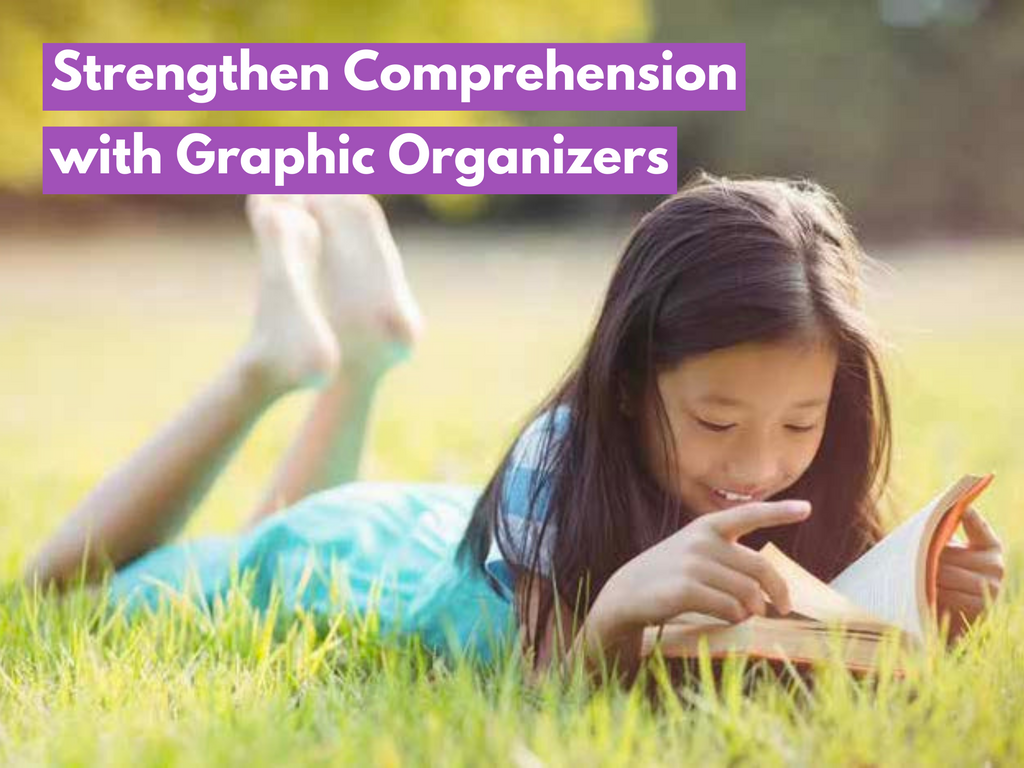By Paula Dugger, M.Ed.
Books are excellent resources for boosting background knowledge and learning new content. Even books with simple text written for beginning readers are a wealth of information! They offer information through text, photographs, and illustrations, encouraging opportunities for in-depth discussions and vocabulary expansion.
It can be challenging for beginning readers to think beyond the text. Graphic organizers are excellent tools that encourage students to use pictures and make inferences. This blog gives ideas for using books with simple text and graphic organizers to support beginning readers with comprehension.
The examples I use refer to a unit on seasons and weather, using books from Hameray's Kid Lit Seasons and Weather Theme Set. Written for kindergarten with guided reading levels ranging from A–D, each book has simple text, supportive illustrations, and pictures that students easily identify with.
Prior Knowledge
I start my first lesson by asking students what they know about a topic. This is an opportunity to activate and share background knowledge. I learn what my students have experienced and what is new material.
Kids relate to weather and seasons in ways that personally affect them. Every child has encountered some seasonal weather event in their short lifetime, such as rain, snow, thunderstorms, dust storms, and even tornados or hurricanes. Depending on where the child lives, their weather experiences may be limited. Consider prompting with questions such as:
What does it look like outside?
Is it rainy, stormy, sunny, snowy, or cloudy?
How does it feel?
Is it cold? Is it hot? Is it warm? Is it cool? Is it windy?
How do you dress? (shorts, pants, coat, sweater, swimsuit, mittens, hat, boots, etc.?)
What kinds of activities can you do outdoors? (swim, play, walk, sled, etc.)
Inferencing
Next, we dig deeper into the content, highlighting one season at a time by using books to expand our knowledge. Because text vocabulary is limited in lower-leveled books, students infer things from stories for meaning. Supportive pictures, illustrations, prior knowledge, and the text work together to help readers make “educated guesses” or inferences about the story. Young readers need to preview the pictures/illustrations and talk about them before reading the text.
Here is an activity that practices making inferences. It can be modeled for the whole class. Then, depending on your students, it can be completed individually or in groups after reading each story. Using the Kid Lit book At the Beach, students must make inferences about the season and weather since the specific season is never mentioned in the text. Students can complete the graphic organizer below based on prior knowledge and clues from the illustrations. Using clues from the organizer, most readers will infer that it is summer.

The nonfiction book, Winter Weather, requires less inferencing due to the vocabulary and pictures. Remember that winter is not the same in all climates.

Comparing/Contrasting
After students have read books from different seasons, conclude the unit using the same type of graphic organizer to compare differences in seasons. It is also fun to compare traditional seasonal weather with your students' home location or another location. Winter in Alaska and Hawaii does not look and feel the same.
Graphic organizers expand learning with simple text, scaffolding students to dig deeper, using text, photos, and illustrations to understand the story. They are also excellent references for new vocabulary and phrases. Click the image below to access my free downloadable graphic organizers designed to help record information about seasons and weather. These organizers can compare seasons and record new knowledge gained from the text. I hope you and your students find these ideas engaging and helpful!
~~~
Kid Lit is a unique series for kindergarten featuring 256 paired fiction and nonfiction titles. Each fiction story gives a peek into a slice of a child's life, paired with a related nonfiction text to expand familiarity with the world. Organized into 8 themes: all about me, community, culture, explorations, health, interests, seasons & weather, and social-emotional. Guided reading levels A–D.
~~~
 Paula Dugger has a B.S., M.Ed., and Reading Specialist Certification from The University of Texas at Austin and Reading Recovery training through Texas Woman’s University. Paula spent 35 years in public schools teaching children to read in grades 1-12, including 23 years as a Reading Recovery Teacher and Teacher Leader. She also served as a Reading Recovery Teacher/ Teacher Leader and the reading coordinator for her school district in Texas, overseeing district-wide reading programs spanning all grade levels. In addition, she has been an adjunct professor in reading at Texas Woman’s University and Dallas Baptist University.
Paula Dugger has a B.S., M.Ed., and Reading Specialist Certification from The University of Texas at Austin and Reading Recovery training through Texas Woman’s University. Paula spent 35 years in public schools teaching children to read in grades 1-12, including 23 years as a Reading Recovery Teacher and Teacher Leader. She also served as a Reading Recovery Teacher/ Teacher Leader and the reading coordinator for her school district in Texas, overseeing district-wide reading programs spanning all grade levels. In addition, she has been an adjunct professor in reading at Texas Woman’s University and Dallas Baptist University.
Paula and her husband Neil enjoy raising Texas Longhorns and are parents of two daughters and five grandchildren. She has authored over 40 blogs and 22 early literacy books for Hameray. She finds it personally rewarding that her books are the starting point of her grandchildren’s journey to becoming successful and proficient readers.



























































